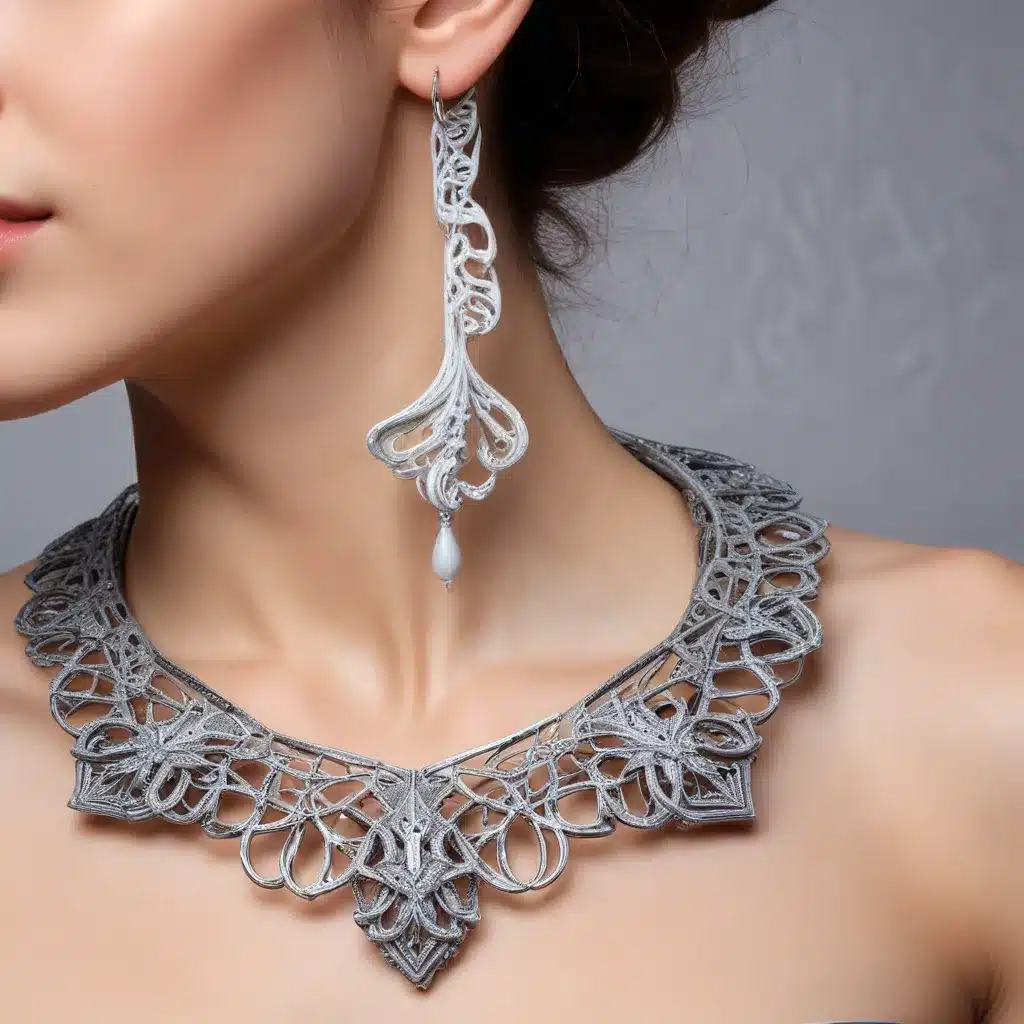
In the ever-evolving landscape of jewelry design, a new frontier has emerged that seamlessly blends art, technology, and sustainability – the captivating world of 3D-printed jewelry. This innovative approach has unleashed a realm of creative possibilities, allowing designers to push the boundaries of traditional jewelry-making and offer their clientele truly unique and personalized adornments.
Artistic Techniques
The foundation of 3D-printed jewelry lies in the additive manufacturing process, where intricate designs are brought to life layer by layer. This digital fabrication method grants designers unprecedented control over the final product, empowering them to explore a myriad of geometric shapes, organic forms, and even kinetic features that were once deemed impossible to achieve through conventional techniques.
The design process itself is a harmonious fusion of artistic vision and technological prowess. Designers often begin by digitally sculpting their ideas, harnessing the power of CAD (Computer-Aided Design) software to meticulously craft each nuance and detail. This digital medium allows for seamless iterations, rapid prototyping, and the realization of even the most ambitious design concepts.
Materiality in 3D-Printed Jewelry
The versatility of 3D printing extends beyond mere form, as it has also revolutionized the materials used in jewelry-making. No longer confined to the traditional precious metals, designers now have access to a wealth of innovative polymer-based materials, metal-infused filaments, and cutting-edge composites that offer a diverse range of aesthetic and functional properties.
These advanced materials not only inspire new creative directions but also introduce intriguing possibilities for personalization and customization. From vibrant, lightweight polyamide pieces to the captivating shimmer of alumide (a blend of aluminum and polyamide), 3D printing has empowered designers to push the boundaries of materiality and deliver truly unique and expressive jewelry.
Aesthetic Considerations
The rise of 3D-printed jewelry has given birth to a new era of artistic expression, where designers are free to explore a wide spectrum of aesthetics. Some gravitate towards a minimalist approach, harnessing the inherent beauty of geometric forms and clean lines to create pieces that exude a sense of understated elegance.
Conversely, others have embraced the medium’s avant-garde potential, crafting jewelry that challenges conventional notions of wearable art. These bold, imaginative designs often incorporate intricate patterns, kinetic elements, or unexpected material combinations, captivating the senses and inviting the wearer to engage with the piece on a deeper level.
Ultimately, the true power of 3D-printed jewelry lies in its ability to serve as a canvas for personalized expressions. Designers can now offer their clients the opportunity to collaborate, infusing each piece with individual preferences, cultural narratives, or even emotional resonance.
Innovative 3D Printing Processes
The realm of 3D-printed jewelry is not a monolith; it is a dynamic ecosystem of various fabrication techniques, each with its own advantages and applications. Fused Deposition Modeling (FDM), for instance, is a widely accessible method that allows for the creation of intricate, affordable pieces, while Stereolithography (SLA) and Digital Light Processing (DLP) offer exceptional precision and surface finishes for more delicate or intricate designs.
As the technology continues to evolve, designers are exploring even more innovative processes, such as selective laser sintering (SLS) and multi-material 3D printing, to push the boundaries of what is possible in jewelry design. These advanced techniques enable the seamless integration of diverse materials, kinetic components, and even electronic elements, ushering in a new era of wearable technology and interactive adornments.
Sustainability in 3D-Printed Jewelry
Alongside the artistic and technical advancements, the rise of 3D-printed jewelry has also sparked a conversation about sustainability within the industry. The additive manufacturing process inherently minimizes material waste, as designers can precisely control the amount of raw materials used, reducing the environmental impact of traditional jewelry-making methods.
Moreover, the potential for recycled materials and customizable designs further reinforces the eco-conscious nature of 3D-printed jewelry. Designers can now incorporate recycled polymers, metals, or even bio-based materials into their creations, while also offering clients the ability to tailor each piece to their unique preferences, minimizing the risk of unwanted or unused jewelry.
Emotional Resonance
Beyond the technical and aesthetic innovations, 3D-printed jewelry has the power to evoke profound emotional resonance. Designers can imbue their creations with symbolic representations, drawing inspiration from cultural narratives, personal experiences, or even profound life events. These pieces serve as visual manifestations of the wearer’s identity, values, and connections, fostering a deeper sense of meaning and attachment.
Interdisciplinary Collaborations
The rise of 3D-printed jewelry has also fostered a remarkable cross-pollination of disciplines, as designers, artists, engineers, and entrepreneurs converge to push the boundaries of what is possible. This collaborative spirit has led to the creation of breathtaking pieces that seamlessly blend artistic expression, technological innovation, and commercial viability.
Future Trends
As the 3D-printed jewelry landscape continues to evolve, the possibilities are truly limitless. Designers are eagerly anticipating further advancements in materials, exploring the integration of smart textiles, luminescent polymers, and even generative design algorithms that can create truly one-of-a-kind pieces.
The integration of wearable technology into jewelry design is another captivating frontier, as designers explore the fusion of form and function, creating pieces that not only captivate the senses but also enhance the wearer’s everyday experience.
In the ever-evolving world of jewelry design, the emergence of 3D printing has ushered in a new era of artistic expression, technological innovation, and sustainable practices. From the intricate geometric forms to the captivating material explorations, this medium has empowered designers to push the boundaries of what is possible, offering their clientele truly unique and personalized adornments that resonate on both an aesthetic and emotional level. As the industry continues to evolve, the future of 3D-printed jewelry promises to be a captivating journey of creative exploration and technological advancement.

